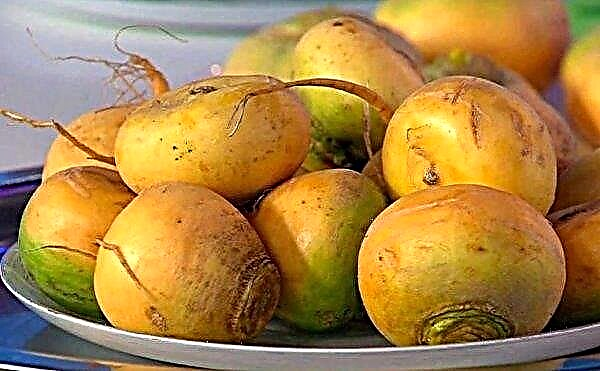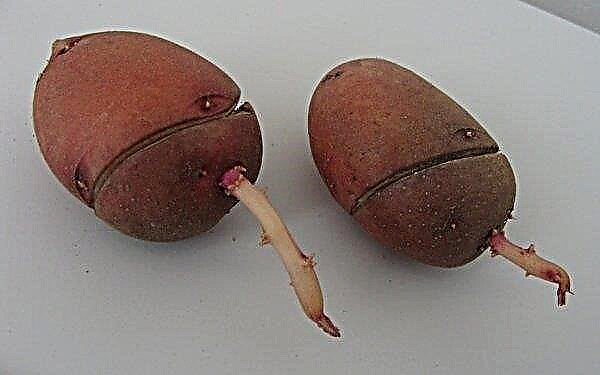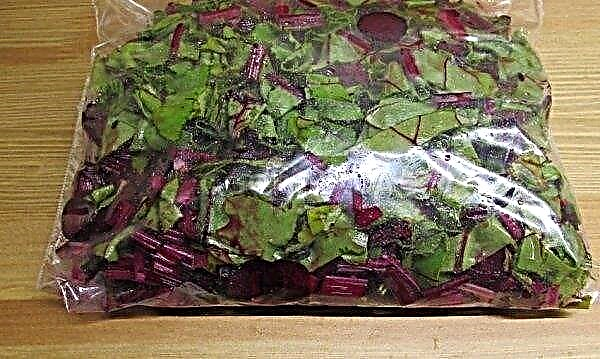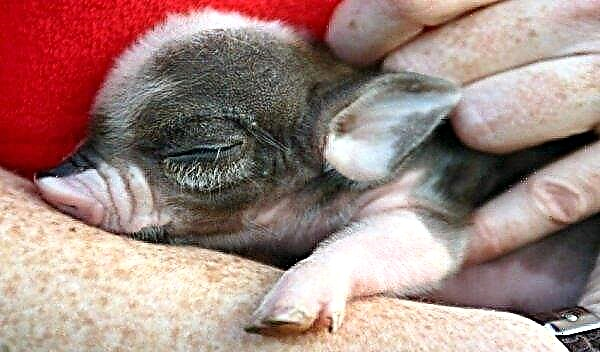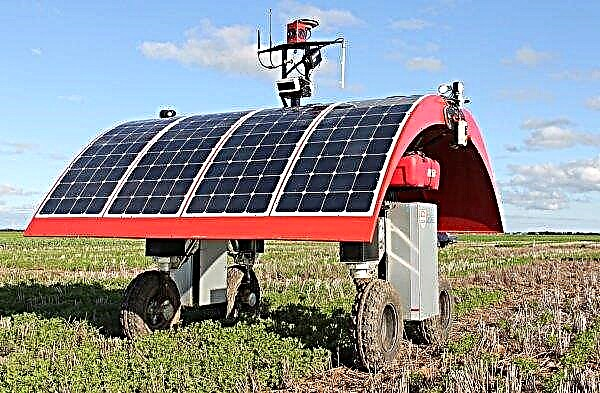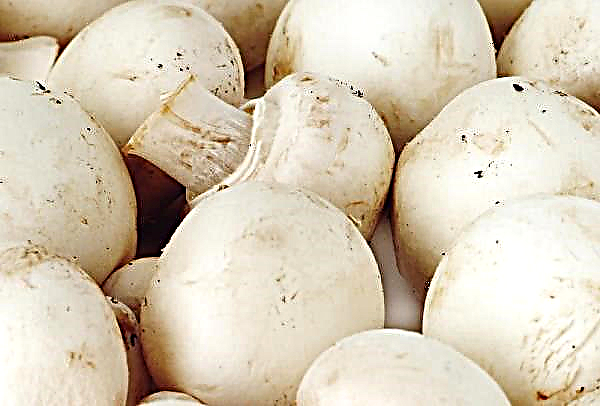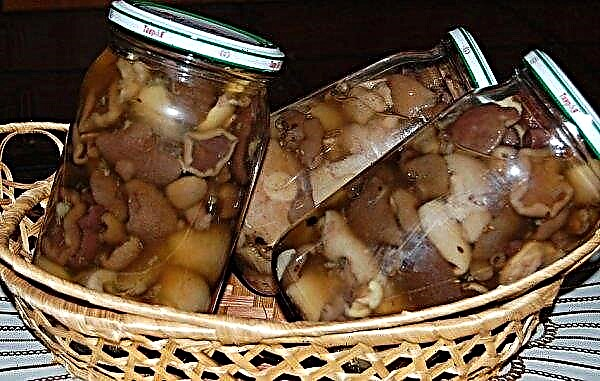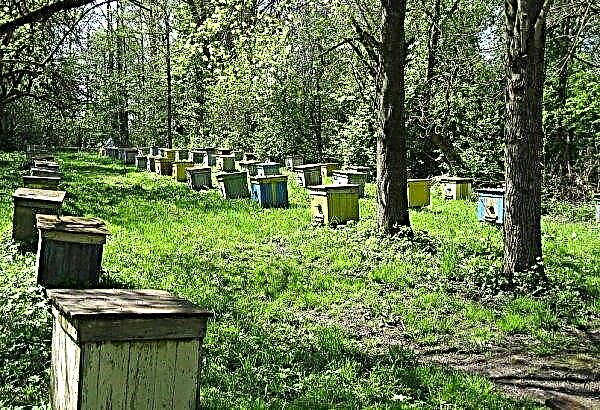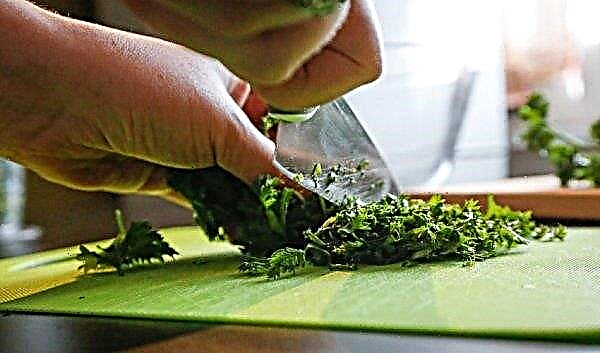Having even a small household, you should always take time to care for it. Using automatic feeders, you can significantly save time and not worry about the diet of poultry. A correctly selected feeder will increase productivity and ensure healthy nutrition of chickens, because contaminated food and water, getting into the body of a bird, provoke various diseases.
What is an automatic timer feeder
Auto-feeders with a timer are designed for a clear regime power supply with a dosed feed. You can only load dry food into them. The timer sets a certain time for dispensing food.
This design includes a screw through which the grains fall into the tray. Often all models of automatic feeders of this type are equipped with a container for storing feed and a spare battery for the timer. The dispensing period can be adjusted independently.

The total number of daily feeds is about 8. A reliable cover tightly covers the entire base of the feeder and protects its contents from the ingress of foreign substances and moisture. The tray can be easily removed from the common base and cleaned. The only drawback of such a mechanized device is the high cost.
Did you know? Ayam Chemani is a rare Indonesian breed of chickens in which hyperpigmentation has led to the fact that birds with black plumage also have a black color of internal organs and even bones.
Industrial Model Overview
In specialized stores you can find a large number of different options for feeders, ranging from bunker to technological models with a timer and the automatic spreading of food for chickens.

Simple feeders can be purchased at affordable prices, and mechanized and improved options will be of high cost. An important role is also played by the material from which the container is made, its appearance and quality will also affect the prices.
Auto feeders can be sold fully finished or can only be in the form of a tray with dividers. In the case of simple trays, you will need to independently find a jar or other container for falling asleep grain.
Such feeders for adults are impractical to install, because chickens can easily turn them over. In the design of more expensive options there are barrels or bottles up to 20 liters. A special device in the form of a timer that can run on batteries or accumulator is attached to the bottom of the tray.
DIY plastic hopper feeders
It is easy to make auto-feeders from plastic materials yourself using improvised tools. This work is not time-consuming and will not take much time.
From a plastic bucket
Absolutely everyone who lives in a private house or has a summer cottage has a plastic bucket on the farm. This capacity will be the basis of the plastic hopper feeder. As a container for direct feeding of the bird you will need a basin, a plastic tray or something like that. To make a feeder of this type, you will not have to draw up a drawing.

The process includes the following steps:
- In the bottom of the bucket you need to make 4 fairly large holes for falling asleep.
- Attach the hopper to the tray so that it can be easily removed to clean food debris.
- Filling with grain (or other loose food), cover the bucket so that no debris or other foreign substances get into the cavity.
Important! When making self-feeding feeders, be sure to ensure that their design does not have sharp and protruding elements that can injure birds.
From plastic bottles
This is the easiest chicken feeder that you can make with your own hands. To create a design you will need only two bottles.
The process of creating an auto feeder:
- One bottle should be cut in half and make gaps in which the bird can stick its head in to take food.
- Insert the other bottle with the cut-off bottom into the first so that its neck does not come into contact with the bottom of the first. Otherwise, the feed will not fill the space intended for feeding. The optimum distance is 4–5 cm.
- Pour grain inside the inverted container, then cover it.

Made of wood or plywood
Plywood hopper feeders are characterized by good stability. Materials can be purchased at hardware stores. If you have recently made repairs, then finding the right elements of the house will not be difficult. By attaching such a design in the chicken coop to the wall, you can significantly save the area of the room and not worry about contamination of the feed. There are 2 main types of such feeders, the manufacture of which will be described later.
Without pedal
This type of construction is bunker and is characterized by the fact that birds always have open access to feed.
For the feeder you will need:
- plywood or chipboard;
- Reiki
- drill with nozzles;
- screwdriver with nozzles;
- loops;
- sandpaper;
- saw;
- pencil;
- paper sheets;
- roulette.
Important! The materials from which the feeder is made must be non-toxic. It is better not to use paints and varnishes.
The work is performed in the following sequence:
- First of all, patterns should be prepared on the basis of which elements from plywood will be cut. Side walls (length 40 cm), upper edge (length 26 cm), lower edge (length 29 cm), front part (a pair of rectangles 28 × 29 cm and 7 × 29 cm), cover (26 × 29 cm) are drawn on paper , bottom (29 × 17 cm) and back wall (41 × 29 cm). Wood / plywood parameters should match the selected drawing. All parts drawn must be transferred to plywood / wood and carefully cut.
- The areas where the fastenings will be done must be equipped with holes.
- Assembly is carried out according to the drawing. The entire tank design into which the feed will be poured is set at an angle of 15 °.
- The lid that closes the feed container is seated on a hinge and attached to the backs of the side supports.
- At the end of the complete assembly, the feeder must be wiped with sandpaper and treated with an antiseptic.
Video: DIY chicken hopper feeder
With pedal
The difference between this feeder and the previous one is that the chicken gets access to the feed after it steps on the pedal. If you treat the outer part of the feeder with a waterproof solution, then it can be easily installed in the open space, without fear of moisture.
For a feeder with a pedal you need to have the following materials:
Recommended reading

- boards or plywood;
- thin bars of wood;
- fasteners;
- loops;
- electric drill with nozzles;
- sand paper;
- a saw;
- pencil for drawing;
- paper;
- tape measure for measurements.
Workflow sequence:
- The patterns are initially made: the lid of the tray, side walls, bottom, rear panel (inclined location), front wall, top cover and pedal. Dimensions depend on the need and quantity of chickens, as well as the planned amount of feed.
- The bars are sawn into 6 pieces. The longest are needed to fix the pedal and the tank into which the feed is lowered. Medium-sized bars will be needed for the lid, which will be located above the tray. Short will connect the elements of the lifting mechanism.
- All elements need to be cut with a saw and processed with sandpaper.
- The walls are pulled together with screws. The rear panel should be installed at an angle of 15 ° so that the rest of the feed does not stagnate in the filling hopper.
- The top cover is hinged.
- Medium-length bars are installed on the sides of the tray cover. At one end, gaps should be made in the bars. The hole closer to the edge should have a larger diameter than the bolt. Using the same principle, holes are made in the side walls of the tank. Screwed-in bolts should move easily.
- By the same type, the longest beam is attached to the pedal. The hole connecting the bar to the wall is made into a fifth of the length of the bar. It is important to remember the hole at the end of the beam.
- The smallest sticks are attached to the holes that remain. Their installation should be strong and rigid, otherwise the pedal will be non-functional. After assembly, make sure that the cover is lifted.
- At the final stage, the feeder should be treated with an antiseptic.
Video: Bunker feeder with pedal
From the pipes
With the help of such an installation, it is possible to significantly facilitate the work of caring for chickens and to ensure proper nutrition of a large livestock. You can use pipes for any purpose.
PVC pipe with tee
Although the design does not look very aesthetic in appearance, it stands out for its convenience and relates to budget options.
Preparations for the implementation of work on the creation of the feeder:
- 3 pipes, the diameter of which will be the same - 110 mm, and the length of each is different - 70, 20 and 10 cm;
- tee with an angle of 45 °;
- fastening devices that ensure reliable fixation of the pipe to the wall;
- cap.
Did you know? In one of the collective farms of Zelenodolsk district, even during the USSR, an unusual case was recorded when a chicken laid an egg with a double shell. There was also two squirrels, but the yolk — one and it was inside the "nested" egg.
Stages of manufacturing an automatic feeder from pipes:
- The main pipe must be attached to the wall and put on a sleeve with three branches.
- In the installed branches, make 3-4 holes for feeding. The openings on the sides can be left open, or you can close so that the feed does not crumble.

On the pipe into which the grain or feed chopped mixture will be filled, there must be a plug to prevent debris from entering. The design of an automatic feeder made of PVC pipe with a tee refers to bunker installations, so the grain is poured into it no more than twice a week.
From pipes with knees
This type of design is considered by the poultry farmers to be the most practical. The only negative is that such feeders are inconvenient to clean. Here you have to be smart, because constantly dismantling it is very inconvenient.
Check out

- a pipe with a diameter of 110 mm and a length of 1.5 m;
- 2 knees: the first - at an angle of 45 °, the second - 90 °;
- fasteners;
- stub.
Manufacturing process:
- The assembly of the structure at the first stage is as follows: a pipe is taken and the elbow is first attached to it at an angle of 45 °, and then - 90 °.
- The finished feeder is attached to the wall in a convenient way.
- The feed is poured with a jar or similar small container, after which the filling hole is closed with a lid or cap.
Features of the installation of feeders
Bird feeders can be installed both indoors and outdoors. It all depends on the type of feeder chosen and the place where the chickens are the longest. If the bird spends a lot of time in a special paddock, then it is better to install food devices there. Floor options can be placed anywhere, but it is advisable to shelter them from the rain.

Mounted feeders are installed around the perimeter of the pen. They are fastened with brackets or other hand-made devices. If the chickens are in the chicken house most of the time, it is recommended to install hopper feeders, which are more hygienic and do not take up much space in the house. Automatic feed will allow the birds to feed when they want.
Each owner chooses the most convenient type of feeder, based on the available space and the needs of chickens. The main condition that must be observed when making a feeder with your own hands is the strength and safety of the structure.

